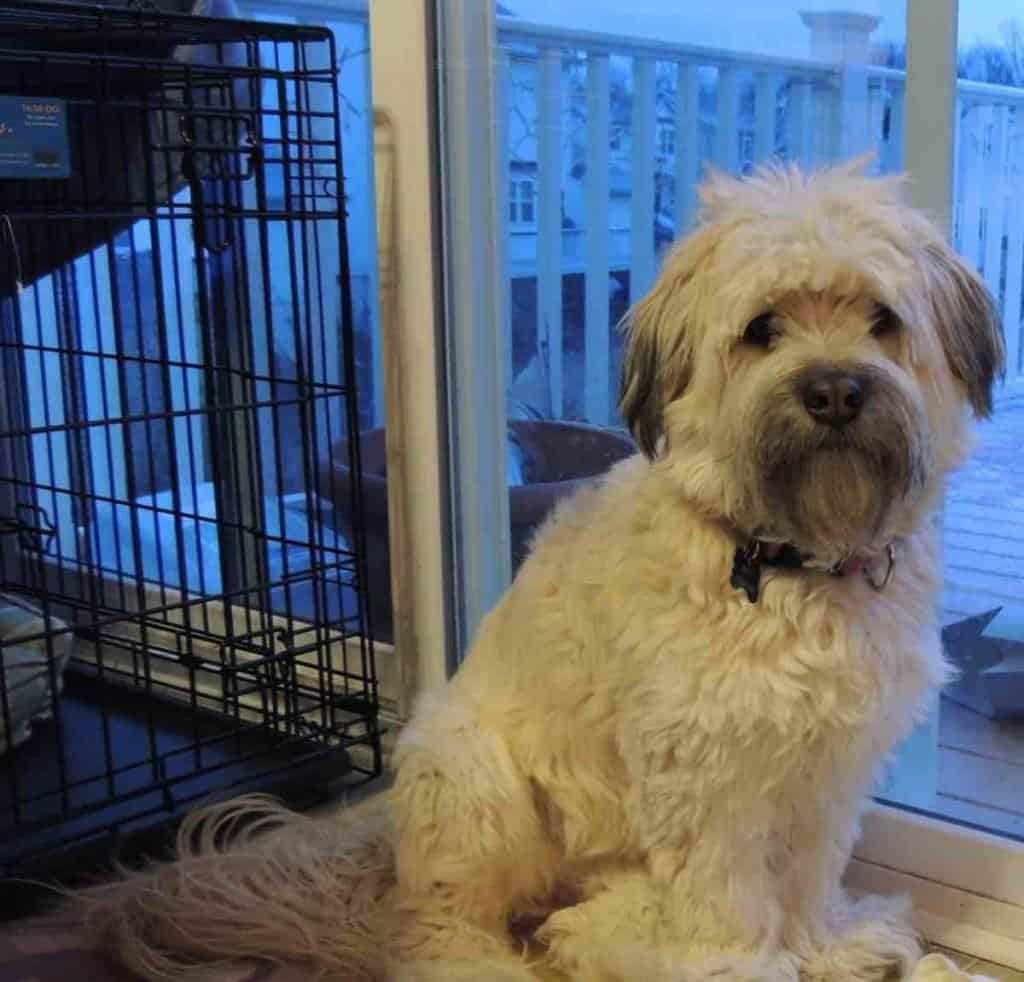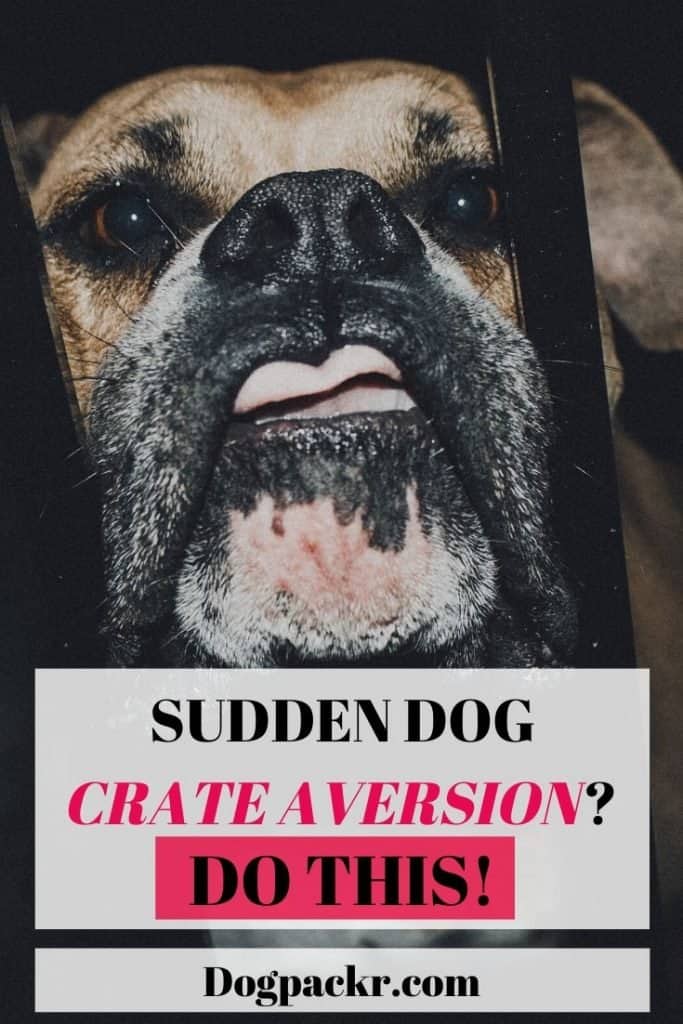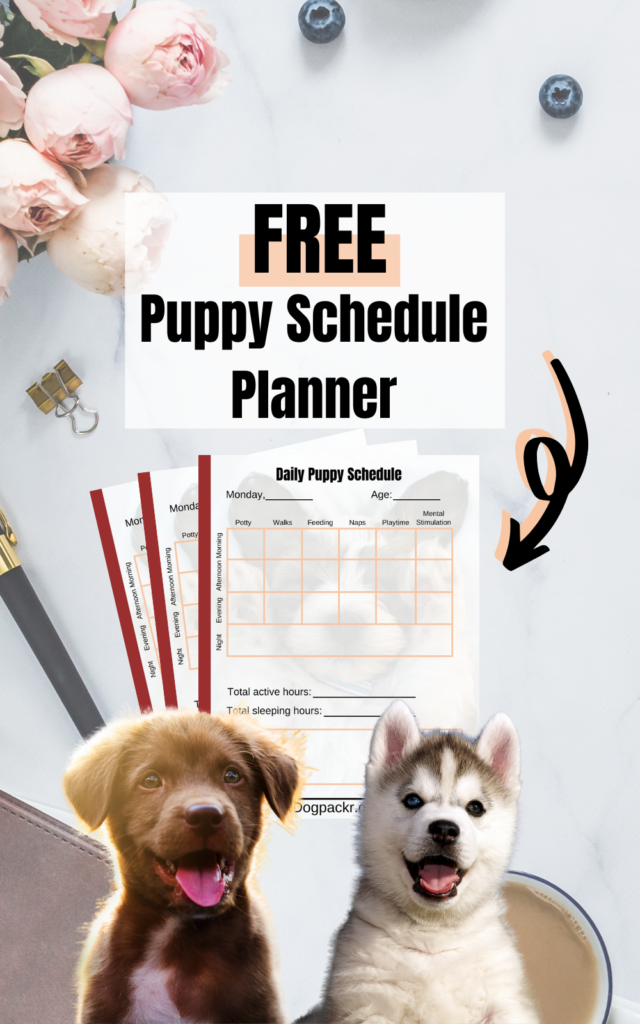
So, your dog suddenly hates his crate and you don’t know what to do? Don’t worry, in most cases this is either a phase that will pass or you’ll be able to train it again with some patience.
First, you have to look at the possible reasons that causes your dog to suddenly hate his crate. Did he hurt himself in the crate? Does he suffer from separation anxiety and you left him alone in the crate a few times? Did you change anything in or around the crate? Did you crate him as a punishment? These can all be possible reasons.
Once you found out what’s the probable cause, I’ll show you how to start fixing his aversion.
Table of Contents
Reasons your dog suddenly hates his crate and solutions
Here are the most common reasons for a dog to suddenly hate his crate. Under every reason, you’ll also find a solution, so that you can get back to normal as quickly as possible.
1. Change of environment
Dogs love routine. And they can quickly get stressed if something changes. Have you placed the crate in a different spot? Have you washed his pillow or blanket? This makes if fresh for you but also unfamiliar for his nose.
Having a clear routine is also one of the easiest ways to help a dog relax. This is why I’ve created this free puppy schedule planner that allows you to set up a routine that works for you and your dog!
Solution
If you’ve changed anything recently, change it back to when it still worked. You can also try to always leave something in there that he likes, like his plush toy, that you never wash. So, it always has that familiar smell.
In case you can’t change it back, then you just have to be patient. Dogs usually adapt quickly to new routines and environments. Don’t react to his crying and try giving him a chewy when he goes in. Chewing helps to relax and keeps your pup busy.
2. Negative association
I know, it’s tempting to crate your pup when he’s been nasty!
The problem is that with repetitive crating as a punishment, your dog will start to have negative associations. So, he starts to see his crate as a bad, uncomfortable place while you actually want him to love his crate as a sleeping and relaxation den.
Solution
Negative association asks for counter conditioning! You have to teach your dog to love his crate again. This can mean that you have to start crate training all over again.
But not necessarily. You have to find your dog’s trigger points. Does he still usually go inside by himself but doesn’t like it when you close the door? Then you can start there. Or does he avoid it all together? In that case you have to start from zero by giving him some yummy treats—or anything else that makes your dog happy—in the crate.
Here’s a great video that can help you if your dog is barking in his crate:
3. Over-crating
How much time does your pup spend inside his kennel? A few hours per day?
Have you been really busy lately and had to increase his daily kennel time? If this is the case, your doggo is probably bored and has had enough. It’s similar to bad association. He’s feeling uncomfortable inside his crate and hence doesn’t want to go inside, anymore. It’s like if you hate your job and it’s super boring. You feel imprisoned and you hate to even think about it. That’s probably how Fido’s feeling!
Solution
Make sure he gets enough exercise
As explained in this post, dogs sleep a lot during a day! So, it’s perfectly fine to leave your pupper in his crate for several hours if he’s actually tired. For instance, I think it’s no problem crating him for 6 to 8 hours if he had a good long walk before that and also gets a lot of action in the evening.
Keep in mind that his need of exercise may change over time. So, try to do some more before his next crate hour and slowly increase the time he’s spending in it.
If you’re crating your dog while your home, limit it to 1 or 2 hours at a time. It might be difficult for your dog to understand why he has to be in a crate in a different room than you.
Try a small room sometimes
If possible, you could also transition to leaving him in a room where he can’t destroy much. In my case it’s the kitchen. This allows your doggo to have more space to stretch out. On the other hand, it’s a confined space, so he doesn’t feel the urge to protect the whole house. Then you can still crate him at night which allows for a little more variety.

4. Separation anxiety
Another possible reason is that you’ve only crated your pup when you were in the same room, so far. Now you want to go one step further and also leave him in his crate while you do the groceries. And all of a sudden, your dog seems to hate his crate and doesn’t want to go in there anymore. That’s a pretty clear sign that your doggo suffers from separation anxiety.
Solution
Separation anxiety needs a lot of patience to deal with. This is a very good article that explains separation anxiety in detail and shows you how to train your dog.
My Miniature Poodle Baloo suffers from pretty severe separation anxiety. When I was crate training Baloo I literally had to extend the periods I was gone by seconds!
This videos also explains it very well:
5. Conditioned behavior
Some dogs try to test their boundaries. They might have found their crate ok but then one day they decide, ok, I’m done with it! It’s similar to when your dog suddenly refuses to eat his food just to see if he can get something different.
How did you react? Did you immediately jump up and try to calm him? In that case he probably learned that he gets attention when he’s being crazy. Therefore, he’ll keep doing that because he loves getting attention! It’s the same as one of the reasons why he might get excited in the car.
Btw, if your dog tends to get overly excited very easily, make sure to check out these quick tips to help him calm down.
Solution
This asks for counter conditioning as well. At the moment he probably associates crazy behavior with getting attention. If he doesn’t get any attention quickly, then he’ll just continue until he gets what he wants!
Now you need to change that again by making calm behavior more interesting and rewarding. Make sure to only reward quiet behavior with praise or treats.
Related topic: For dog training in general I highly recommend you get a program that walks you through step by step, such as Braintrainingfordogs. Certified dog trainer Adrienne Farricelli teaches you to train your dog to be the best dog he can by be using mental stimulation! Check out Dogpackr’s review to see if this is a fit for you!
6. Other dogs/cats went in
Dog’s sense of smell is incredibly strong, and they will immediately smell if another animal has been in their crate. If they’re not used to having other animals in the house, this might freak them out and hence could be the reason why your dog hates his crate all of a sudden.
Solution
In this case your best bet is to wash everything thoroughly. Your dog will probably still be able to smell the other dog or cat. But if you also put some of his toys or other familiar things inside, he should accept it as his nest again.
7. Pain
Maybe your four-legged friend doesn’t want to go in his crate anymore because it’s uncomfortable or because something in there hurts him.
Baloo is also a real princess when something’s lying on his bed. He sometimes takes part of his food and deposits it on his bed. But then he doesn’t want to lie on it anymore. He’s a star 😉
Solution
Make sure that there’s nothing that could be painful, such as metal bars sticking out. Also make the bottom nice and soft. Maybe add another pillow or try a thicker dog bed. And if you have a diva like Baloo, take everything that’s lying on his bed and put it to the side.

8. Uncomfortable smells
Has your dog maybe unintentionally soiled his crate or thrown up in it? If you figure out any strong, unusual smells, this could be what disturbs him. Dogs would never soil their nests if they have a choice. But maybe it was really urgent one night and of course, he can’t go out of the crate to do his business.
Solution
Wash the dog bed thoroughly. When you put it back in place, also put something familiar, like a plush toy or another of his blankets inside, so that it smells familiar.
9. Reasons due to his age
Older dogs start having a weaker bladder. If they have to stay in a crate during the night it’s possible that this was fine for a few years. At a certain age, your dog might fear that he can’t make it outside on time, anymore. Or worse, he already had to pee in his crate because he actually had to go at night.
For an older dog, joint problems could also be the reason that he’s not comfortable in his crate anymore. If you suspect that your pup has some health issues, it’s best to consult your vet about it.
Solutions
Old dogs’ behaviors can be quite weird and different from what they used to be. If your old dog doesn’t like his crate anymore, I wouldn’t crate him, unless absolutely necessary. Senior dogs usually have far less energy. So, he’s probably also happily sleeping in his free-standing dog bed in the living room.
Alternatives?
Is it absolutely necessary to crate him? For instance, in case you let your dog sleep in a crate as a puppy to potty train him and keep him from destroying your furniture, then that’s a totally valid reason. But now your dog’s maybe 5 years old, so does he really still need it?
When Baloo was about 1 year old, I started leaving him in the kitchen at night and when I left the flat. It’s still a pretty small room, so it still feels like a cozy nest. But he has a little more room to stretch or maybe lie somewhere else from time to time.
For the car crate of course, you can’t compromise so try the other options. Here’s a guide on how to calm an excited dog in the car.
Related questions
Let’s quickly look at a few related questions.
My dog hates his crate at night
First of all, what does it mean that your dog hates his crate at night? Does he not want to go in there? Or does he whine or bark during the night? If you properly crate trained him and all of a sudden, he doesn’t want to go in anymore, then you might need to train it a little again. But first, try the following:
Make sure that your dog is tired. When your dog is really tired, he doesn’t have any energy to bark at night.
I also recommend leaving his bed in the crate. If you have a big house, you can also put a blanket in the living room. But the most comfortable place should be in his crate. This helps your dog liking the crate as a calm and comfy sleeping place.
If he doesn’t want to go inside, give him a chewy of a filled kong toy after he went inside. Make sure he lied down and is calm before you lock the crate. After that, go to bed immediately. If he’s tired and it’s dark, he shouldn’t have any issues falling asleep.
Puppyintraining’s 21 tips might also help you.
Having a clear bedtime routine can also help your dog relax and sleep more easily. Get your free puppy schedule planner to figure out the best routine for you and your dog!
My dog hates his crate during the day
If your dog doesn’t like his crate during the day, it’s probably one of the reasons listed above.
Think about what might be the reason for your dog’s crate aversion and try different solutions.
My puppy hates the crate
If your dog is still a puppy, this is a great chance to properly crate train him.
If possible, I highly suggest that you start crate training from day one. If you haven’t done it so far, then start right now!
It’s important to know that a puppy won’t just know that the crate is a great place. You have to teach him.
The most important things to do are the following:
- Make being in the crate the best possible experience. This means: only feed him in the crate, give him cool stuff like toys, treats or chewys when he goes in the crate. Also put a super comfy blanket or bed inside.
- Let him sleep in the crate from day 1. Put the crate in your bedroom where he can still see and hear you. Make sure it’s a nice, comfy set up and then just put him inside right before you go to bed. Do this in a very calm manner, as if this was the most normal thing in the world. This way your puppy won’t even have time to think about it. He’s tired, it feels comfy and he’s close to you, that’s all he needs.
For a step by step crate training guide, make sure to check out Dogpackr’s article “how to crate train a dog“.
If your dog is still a puppy, this is also a great chance to start training him as early as possible. There are several ways to do that. But the most cost-effective is definitely to get an online course.
I’ve spent hundreds – if not thousands – of dollars on dog training classes and private dog trainers. In most cases, that’s not necessary at all, though. You can get the exact same information in an online course.
My all time favorite course is Braintraining4dogs. It’s based on positive reinforcement and focuses on improving your dog’s intelligence so that he can basically solve his own problems.
This is honestly the course I wish I had when I first got Baloo. I contains everything you need to know to own the dog of your dreams!
Make sure to check out Dogpackr’s review of the course to see if this is something that could help you and your dog too.

Conclusion
There are a number of possible reasons why your dog suddenly hates his crate.
If you can find out what causes his sudden crate aversion, then it should be fairly easy to make him love his crate again.
But even if you can’t find the cause, don’t despair.
The best solution is usually to just make it the best possible place to be. Plus, take a few steps back in training and slowly build it up again.
If you feel like your pup might need a different crate, then go over to the 6 best crates for dogs to sleep in to find the best option for your dog.
*Disclosure: This post may contain affiliate links, meaning, I get a commission if you decide to make a purchase through one of my links, at no cost to you.



